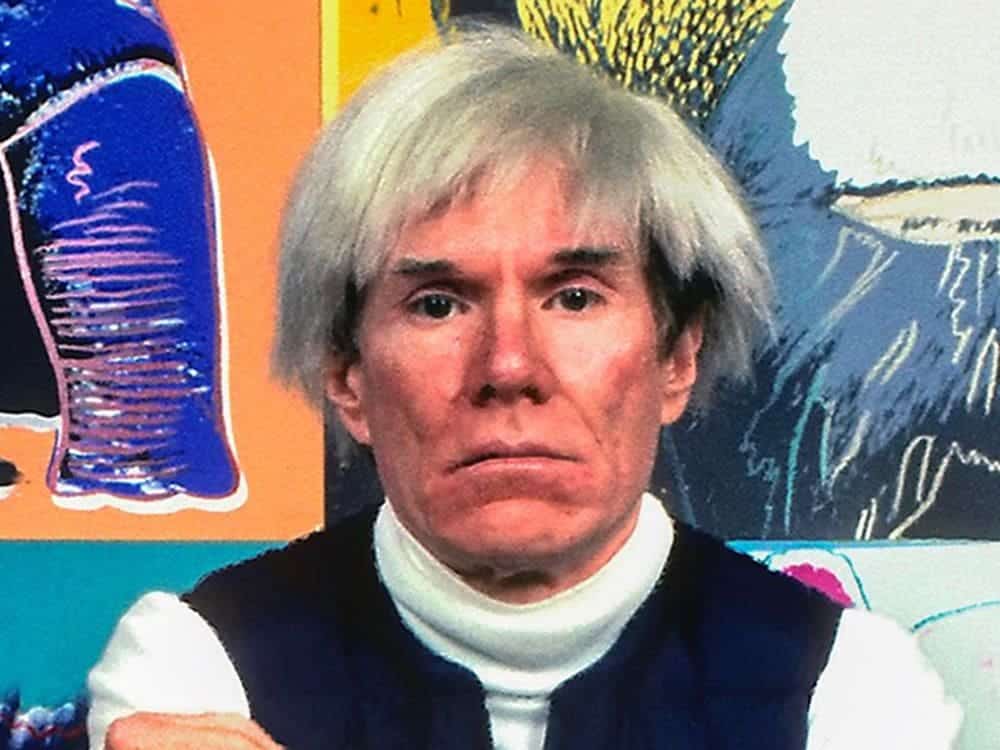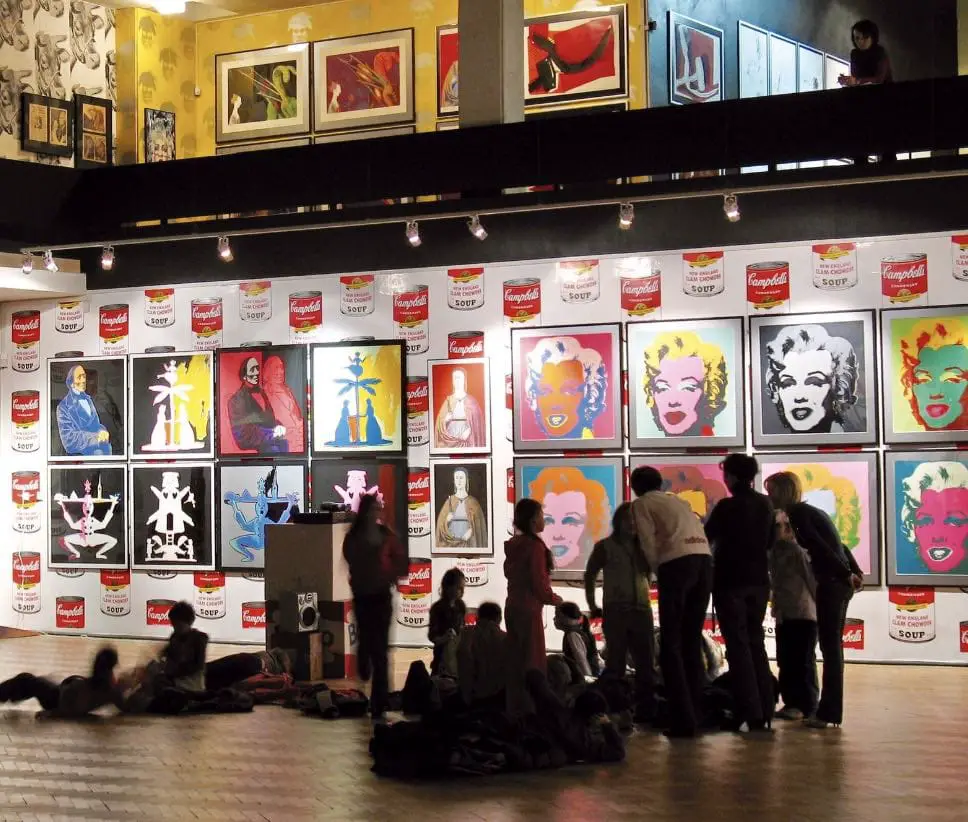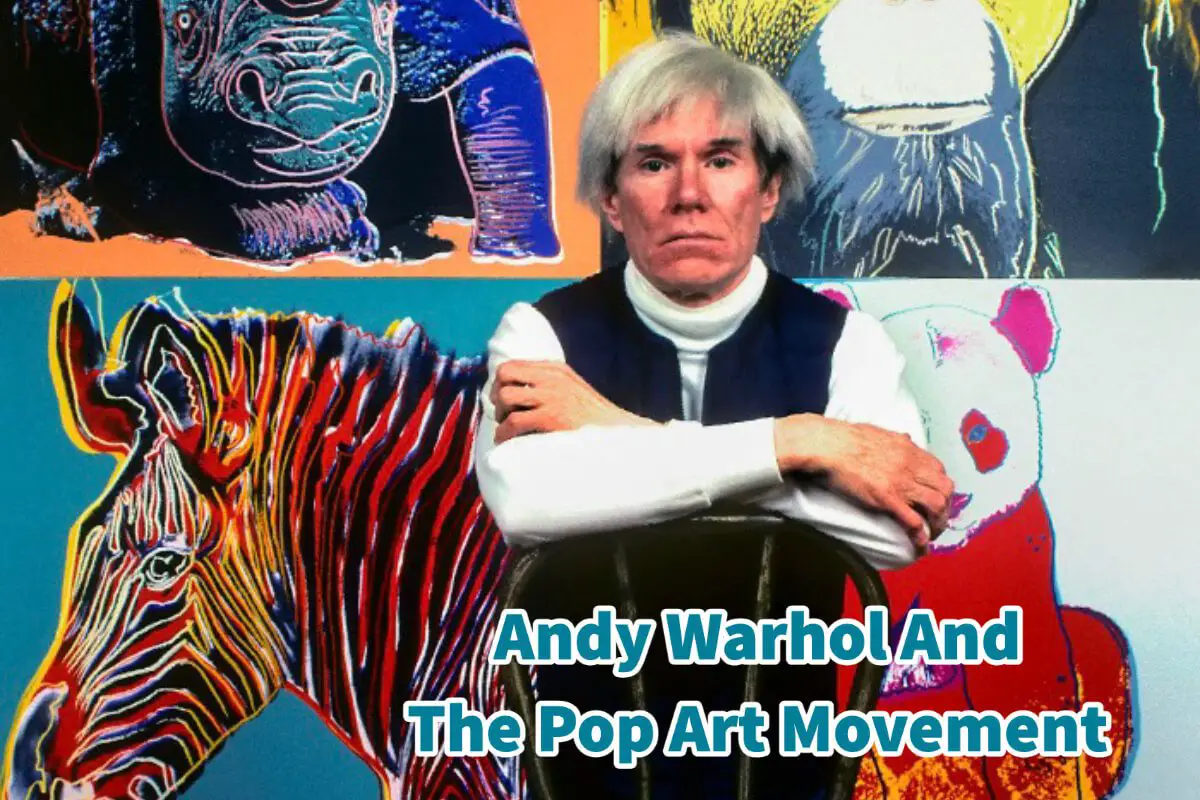Few figures from the mid-20th century art world have maintained as enduring a presence in the cultural zeitgeist as Andy Warhol. He was a leading figure in the Pop Art movement, a cultural shift that sought to challenge traditional perspectives on art and culture.
Andy Warhol was expertly able to infuse consumer culture and popular media elements into his art; Warhol effectively blurred the line between high art and mass production. This ensured that he was a leading person in the Pop Art Movement.
Table of Contents
- Andy Warhol: The Making Of An Artist
- What Is The Pop Art Movement?
- Frequently Asked Questions
- Related Questions
Andy Warhol: The Making Of An Artist
Andrew Warhola, known as Andy Warhol, was born in 1928 in Pittsburgh, Pennsylvania, the son of Ruthenian immigrants (part of Solvekia). In 1949, he graduated from the Carnegie Institute of Technology with a degree in pictorial design, following which he moved to New York City to work as a commercial illustrator.

Warhol began to achieve notoriety in the art world in the late 1950s and early 60s through his exhibitions of paintings of Campbell’s soup cans, Coca-Cola bottles, and wooden replicas of Brillo soap pad boxes. This marked a departure from the prevailing artistic norms of the time, focusing instead on everyday items from consumer culture.
The Pop Art Movement And Warhol’s Role
As one of the Pop Art movement pioneers, Warhol’s works are characterized by using mass-produced images and objects, reflecting the consumerist culture of post-war America. His repeated use of the photographic silkscreen print method allowed him to produce seemingly endless variations of these items and celebrity portraits.
His style placed him at the forefront of the Pop Art movement, challenging the sanctity of art by replicating images from popular culture, thus creating a dialogue on the relationship between artistic expression, advertising, and commodity culture.
Warhol’s Later Years: From Painter To Filmmaker
As his career progressed, Warhol began devoting more time to filmmaking. His movies, such as “Chelsea Girls” (1966), “Eat” (1963), and “Blue Movie” (1969), are known for their inventive eroticism and plotless nature.

The 1960s also saw Warhol nearly lose his life to an assassination attempt by Valerie Solanas, which propelled his celebrity status even further. This incident was depicted in the 1996 film “I Shot Andy Warhol.”

Warhol continued producing prints throughout the 1970s until he died in 1987, focusing on political and Hollywood celebrities, notably Marilyn Monroe. He also engaged in various commercial art projects, further blurring the line between art and commerce.
Andy Warhol’s Legacy
Even after his death, Warhol’s legacy lives on. The Andy Warhol Foundation for the Visual Arts was established in 1987 in his honor, and the Andy Warhol Museum in Pittsburgh continues to showcase his work.

Warhol’s art remains influential, and his approach to art as a reflection of mass culture has forever shaped the art world’s understanding of the interplay between art and popular culture.
Andy Warhol’s influence on the Pop Art movement was significant. He turned the art world on its head by questioning the sanctity of art and its relationship to consumer culture.
Warhol’s impact on the art world remains unmatched. His fusion of high art and consumer culture made him an iconic figure in the 20th-century art scene, and his work continues to provoke thought and inspire artists today.
Warhol once said, “In the future, everyone will be world-famous for 15 minutes,” but it is safe to say his fame has far exceeded his predicted 15 minutes.
What Is The Pop Art Movement?
Pop Art is a revolutionary art movement that surfaced in the mid-1950s in Britain and the late 1950s in America, peaking in the 1960s. This movement spanned across America and Britain, with contributions from various cultures and countries during the 1960s and 70s.
Pop Art was born out of a rebellion against the prevailing artistic approaches and traditional interpretations of art. Young artists believed that the artistic education they received and the art displayed in museums did not reflect their experiences or daily reality.
Thus, they sought inspiration from more familiar and relevant sources, such as Hollywood films, advertising, product packaging, pop music, and comic books.
In 1957, pop artist Richard Hamilton outlined the critical attributes of Pop Art in a letter to his architect friends, Peter and Alison Smithson. According to Hamilton, Pop Art is:
“Pop Art is: Popular (designed for a mass audience), Transient (short-term solution), Expendable (easily forgotten), Low cost, Mass produced, Young (aimed at youth), Witty, Sexy, Gimmicky, Glamorous, Big business.”
Richard Hamilton
The incorporation of such ‘low’ subject matter in art and the seemingly unjudgmental presentation of it were met with horror by modernist critics. Despite the initial criticism, Pop Art was instrumental in expanding the subject matter of art and pioneering new ways to represent it, establishing it as one of the earliest forms of postmodernism.
The transformative power of the Pop Art movement was significantly influenced by artists like Andy Warhol. As a prominent figure in this artistic revolution, Warhol redefined boundaries and brought a seismic shift in the perception of art.

He ingeniously incorporated elements from popular culture and advertisement, showcasing everyday items as objects of art and democratizing art in a manner that had not been done before.
His work challenged the traditional conventions of fine art and reflected the zeitgeist of his era, making him an unforgettable figure in the worldwide Pop Art movement.
Through his creativity and innovation, Warhol’s legacy continues to resonate, shaping the contours of contemporary art.
Anita Louise Art is dedicated to art education, great artists, and inspiring others to find and create their art. We love art that uplifts and inspires. #ArtToMakeYouSmile! #ArtToMakeYouHappy!
If you want to see any of my art, you can find out more by clicking here. If you are interested in what inspires me and my paintings, you can discover more by clicking here.
We have a free newsletter and would love you to be part of our community; you can subscribe to the newsletter by clicking here. If you have any questions, I would be happy to talk to you anytime. You can reach me, Anita, by clicking here.
Subscribe to our Anita Louise Art YouTube Channel with great videos and information by clicking here.
Join us for our podcast “5 Minutes With Art.” Spend just 5 minutes a week with us to discover and learn about great art and artists. You can find out more about our podcast by clicking here.
Frequently Asked Questions
Who was Andy Warhol, and why is he significant in the art world?
Andy Warhol was a prominent American artist who rose to fame in the 1960s. He is widely recognized for his contributions to the Pop Art movement, challenging conventional notions of art by incorporating elements of consumer culture and mass media into his work.
What is the Pop Art Movement, and how did Andy Warhol contribute to it?
The Pop Art Movement emerged in the 1950s and reached its peak in the 1960s. It celebrated popular culture, mass media, and consumerism as legitimate art forms. Andy Warhol played a pivotal role by incorporating everyday objects, celebrities, and commercial imagery into his art, challenging the traditional boundaries of high and low culture.
What are some iconic works by Andy Warhol that exemplify the Pop Art Movement?
Andy Warhol’s most famous works include “Campbell’s Soup Cans,” “Marilyn Diptych,” and “Eight Elvises.” These pieces showcase his fascination with consumer products, celebrity culture, and the repetition of images, characteristic of the Pop Art aesthetic.
How did Andy Warhol use mass production techniques in his art?
Warhol embraced mass production techniques such as silkscreen printing to create multiple copies of his artworks. This approach mirrored the mass-produced nature of consumer goods, challenging traditional notions of uniqueness and rarity in the art world.
What role did celebrity culture play in Andy Warhol’s art?
Celebrity culture was a recurring theme in Warhol’s work. He often depicted famous personalities, such as Marilyn Monroe and Elvis Presley, using a bold and vibrant aesthetic. This reflected society’s increasing fascination with fame and the impact of mass media on popular culture.
How did Andy Warhol’s studio, “The Factory,” contribute to his artistic process?
“The Factory” was Andy Warhol’s famous studio, where he employed a collaborative and assembly-line approach to art production. It became a creative hub for various artists, musicians, and filmmakers, fostering a sense of community and experimentation.
What is the significance of Warhol’s “Campbell’s Soup Cans” series in the context of Pop Art?
The “Campbell’s Soup Cans” series is a landmark in Pop Art. Consisting of 32 canvases, each depicting a different soup can, Warhol elevated mundane, everyday objects to the status of high art. This series challenged traditional artistic subject matter and highlighted the impact of consumerism on contemporary society.
How did Andy Warhol’s art reflect the cultural and social changes of the 1960s?
Warhol’s art mirrored the rapid changes in American culture during the 1960s. His work captured the consumer-driven society, the rise of celebrity culture, and the increasing influence of mass media. Warhol’s art became a reflection of the times, resonating with the spirit of the cultural revolution.
What was Warhol’s relationship with the avant-garde and counterculture movements of his time?
While Warhol’s work was rooted in popular culture, he maintained connections with avant-garde and counterculture movements. His association with figures like Lou Reed and the Velvet Underground showcased his engagement with experimental music and alternative lifestyles, contributing to a broader cultural dialogue.
How did Andy Warhol’s legacy influence contemporary art and popular culture?
Andy Warhol’s impact on contemporary art and popular culture is profound. His innovative approach to art, use of mass media, and blurring of high and low culture continue to influence artists across various disciplines. Warhol’s legacy is evident in the ongoing exploration of consumerism, celebrity, and the intersection of art with mass media in today’s creative landscape.
Related Questions
How Do You Identify A Japanese Artist’s Signature on Woodblock Prints?
The signature on a Japanese woodblock print is the Japanese characters above or near the red artistic seal or chop. Sometimes the artist would add words behind their own name, such as “designed by.” Other times the artist would use different chops or seals during different periods of their life. Many times the actual artist’s signatures are complicated to read.
You can read more by reading our blog How Do You Identify A Japanese Artist’s Signature on Woodblock Prints? by clicking here.
What Is Abstraction In Art? Definition Explored
One such style that has gained immense popularity in the modern era is abstraction. Abstraction in art refers to distorting, simplifying, or exaggerating the natural forms and shapes found in the real world. This art style seeks to communicate emotions and ideas through color, texture, and form rather than realistically representing objects or figures.
By clicking here, you can discover more by reading What Is Abstraction In Art? Definition Explored
Neoclassicism: A Harmonious Revival Of Ancient Art
Neoclassicism, or Classicism, emerged as a significant artistic movement in the 18th century in response to the ornate and frivolous Rococo style. It drew inspiration from the art and culture of ancient Greece and Rome, emphasizing simple linear design and archaeologically accurate depictions of Classical themes. With its focus on harmony, clarity, restraint, universality, and idealism, Neoclassicism left an indelible mark on the visual arts.
You can learn more by reading Neoclassicism: A Harmonious Revival Of Ancient Art by clicking here.


